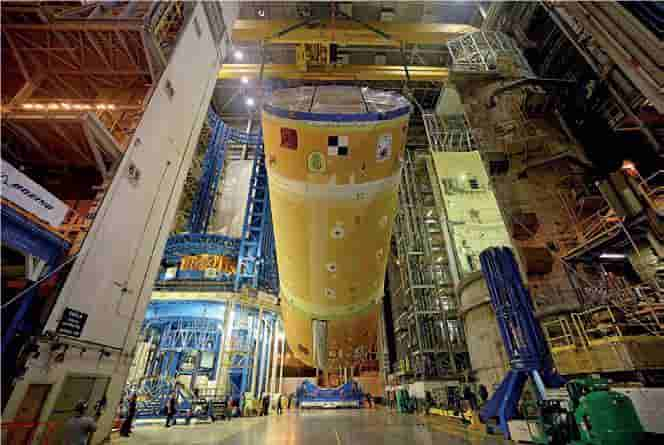PAR Systems is doing some of the heavy lifting as Nasa sets its sights on putting man on the moon and Mars.
In mid-November last year Nasa launched Artemis 1, the first test flight of the space agency’s powerful new Space Launch System (SLS) rocket and the Orion spacecraft. Taking off from the Kennedy Space Center in Florida, US, the SLS launched the uncrewed Orion on a 40,000-mile mission that orbited the moon before splashing back to Earth in mid-December.

The mission represented an important test for the agency before it flies the Artemis II mission, which will take astronauts to land on the moon.
“This uncrewed flight test will push Orion to the limits in the rigours of deep space, helping us prepare for human exploration on the Moon and, ultimately, Mars,” said Nasa administrator Bill Nelson prior to the launch.
Several of the specialised crane systems used to support Nasa’s Artemis programme were built by PAR Systems. The cranes played a key role in the production of the Orion module and were utilised in several phases of the rocket’s production, most notably for the stacking of the final rocket assembly, but also for the hoisting of various stage assemblies and testing of the SLS rocket systems throughout the manufacturing process.
Nasa’s Vehicle Assembly Building (VAB) at the Kennedy Space Center is where several sub-assemblies of the SLS rocket were put together for final assembly. The main overhead crane there is a PAR Systems crane, and it performed the final rocket assembly and payload canister hoisting. It’s a 325-ton bridge crane with a 50-ton auxiliary hook and was used to lift the rocket stage components from horizontal to vertical and stack them into position for the final rocket assembly. It was able to lift the rocket components 462ft high, and was capable of lifting the entire rocket onto the crawler that brought the rocket from the VAB out to the launch pad. Not bad, considering that once fully assembled, the SLS rocket stood 322ft tall and weighed in at 5.75 million pounds.
A further two PAR overhead cranes were also used at Nasa’s Michoud Assembly Facility (MAF) in New Orleans, Louisiana. Both have a capacity of 75 tons with 12-ton auxiliary hook, and can lift rocket components 172ft high. They were frequently used for lifting operations involving the rocket’s fuel tanks and core stage components and were at times used jointly when repositioning the fuel tanks for transport. This tandem operation involved hoisting both ends of the tank, manoeuvring them from a vertical to a horizontal position, before they were moved onto a transport crane, which moved the tanks to other Nasa facilities to begin the next stage of production. Some of these transport cranes were also built by PAR Systems.
Other PAR Systems’ cranes included one for the solid rocket booster production. It is a 200-ton capacity machine with a two-trolley, two-hook configuration, making complex hosting and manoeuvring possible, and enabling the solid rocket boosters to be moved from a horizontal to vertical position for propellant insertion.
Tim Flacco, field service technician for PAR Systems, has worked with Nasa and its contractors in support of the Artemis and Shuttle programmes for the past 15 years. He worked on PAR’s cranes that assembled the SLS solid rocket fuel boosters and on the ones that assembled the main stage of the SLS.
“Our crane system assembled the Space Shuttles, and now Artemis in the VAB at Kennedy Space Center,” he says. “While I never grew up to be an astronaut like every other child dreams to be, as an adult, by working for PAR, I get to be part of the greatest endeavour mankind has ever undertaken. It’s an honour to be even a small piece of history.”
Various types of cranes play a role in the lunar landing plan
没有评论:
发表评论